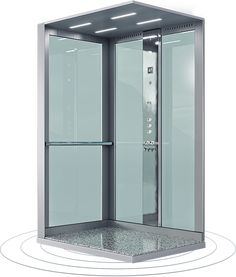Elevate Hospital Efficiency: Elevator Maintenance Essentials
Introduction: In the bustling environment of a hospital, smooth vertical transportation is not just a convenience; it's a critical component of efficient operations and patient care. Elevators in hospitals must function reliably and safely at all times to facilitate the movement of patients, staff, and equipment. Elevator maintenance is paramount to ensure uninterrupted service and compliance with regulatory standards. In this guide, we delve into the essentials of hospital elevator maintenance to optimize performance and uphold patient safety.
1. Regular Inspections and Preventive Maintenance: Scheduled inspections and preventive maintenance are fundamental aspects of hospital elevator maintenance protocols. Professional technicians conduct thorough examinations of elevator systems to detect any signs of wear, damage, or malfunction. By identifying issues proactively, preventive maintenance helps prevent costly breakdowns and ensures the continuous operation of elevators, minimizing disruptions in hospital workflows.
2. Compliance with Regulatory Standards: Hospitals are subject to stringent regulatory requirements governing elevator safety and maintenance. Elevator systems must comply with codes and standards established by regulatory bodies to safeguard the well-being of patients, staff, and visitors. Professional elevator maintenance providers possess expertise in navigating these regulations, ensuring that hospital elevators meet or exceed safety standards and pass regulatory inspections with ease.
3. Emergency Preparedness and Response: In emergency situations, such as power outages or natural disasters, elevators in hospitals must remain operational to facilitate the swift movement of patients and medical personnel. Elevator maintenance includes provisions for emergency preparedness and response, such as backup power systems, emergency communication devices, and contingency plans. These measures ensure that elevators can function reliably during critical situations, contributing to the hospital's overall emergency preparedness.
4. Specialized Equipment and Expertise: Hospital elevators differ from commercial or residential elevators in terms of usage patterns, capacity requirements, and safety considerations. Maintenance providers with experience in hospital elevator systems possess specialized equipment and expertise tailored to the unique needs of healthcare facilities. From servicing high-traffic elevators in patient care areas to maintaining freight elevators for transporting medical supplies, specialized maintenance ensures optimal performance and reliability.
5. Minimization of Downtime and Disruptions: In a hospital setting, elevator downtime can have far-reaching consequences, affecting patient care, staff productivity, and operational efficiency. Effective elevator maintenance strategies focus on minimizing downtime and disruptions through proactive servicing, timely repairs, and efficient response to service calls. By prioritizing uptime and reliability, maintenance providers support the seamless functioning of hospital elevators, contributing to the overall efficiency of healthcare delivery.
Conclusion: Hospital elevator maintenance is a critical aspect of ensuring the smooth operation of healthcare facilities and safeguarding patient safety. By adhering to rigorous inspection schedules, complying with regulatory standards, and implementing emergency preparedness measures, hospitals can optimize elevator performance and reliability. Partnering with experienced elevator maintenance providers equipped with specialized expertise and resources is essential to maintaining the integrity of hospital elevator systems. With a proactive approach to maintenance, hospitals can elevate efficiency, enhance patient care, and uphold the highest standards of safety and reliability in vertical transportation.
